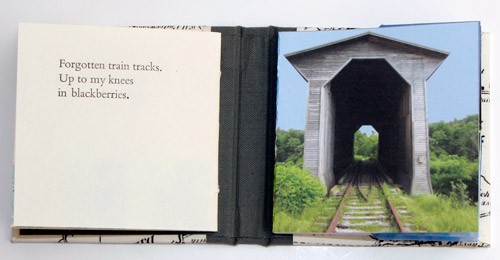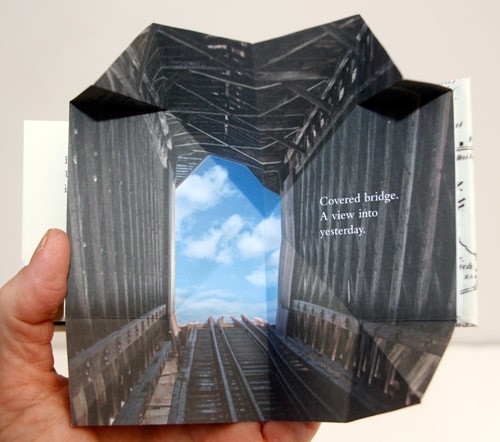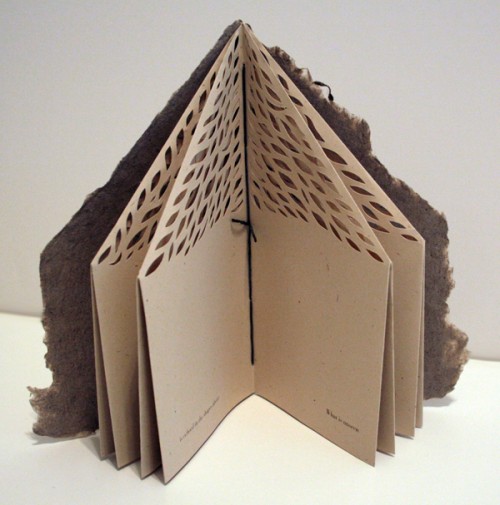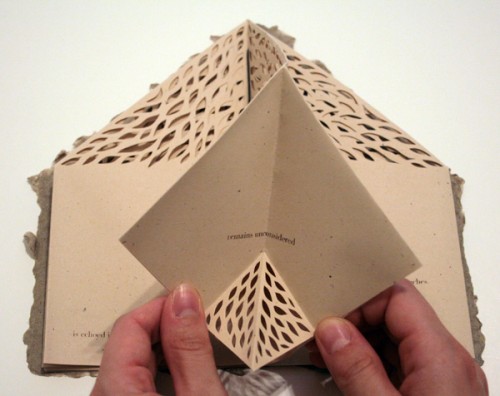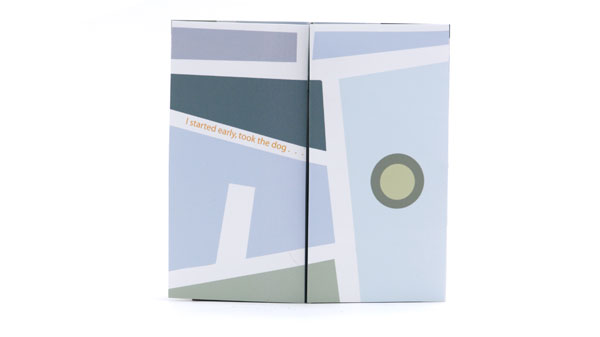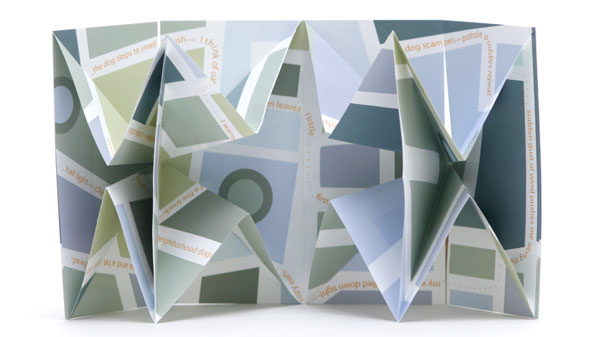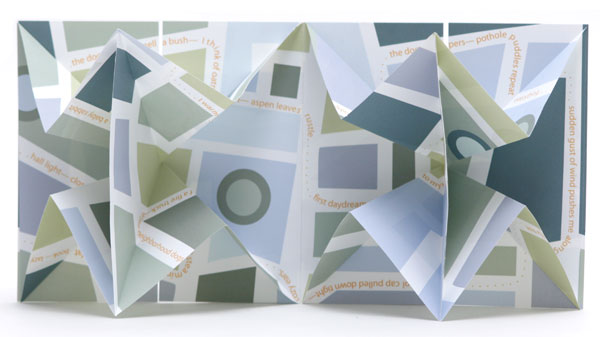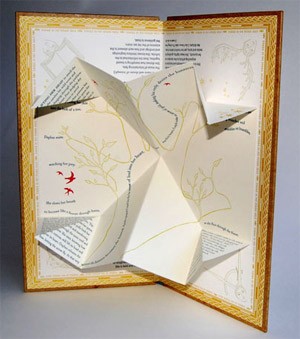 This book, Threshold by Casey Gardner, is another of my growing examples of books using the Turkish Map Fold. It looks like she’s printed on both sides of the fold, and incorporated text on the sheet that holds the map fold. The book is letterpress printed, and revolves around a story inspired by Ovid’s tale of Daphne and Apollo in The Metamorphosis.
This book, Threshold by Casey Gardner, is another of my growing examples of books using the Turkish Map Fold. It looks like she’s printed on both sides of the fold, and incorporated text on the sheet that holds the map fold. The book is letterpress printed, and revolves around a story inspired by Ovid’s tale of Daphne and Apollo in The Metamorphosis.
 On her website, Casey also has a book inspired by a game she played with a friend that is like the prompt challenge I did earlier this year. Casey says:
On her website, Casey also has a book inspired by a game she played with a friend that is like the prompt challenge I did earlier this year. Casey says:
…one day my friend Nance O’Banion and I decided to begin a game where we’d write a bunch of words down, then each time we saw each other, we’d choose one randomly. The next time we met, we’d give each other a completed project based on that word.
You can see the book she did in response to the word “ignite” here — click on the arrow keys above the first photo to see many more detailed images.



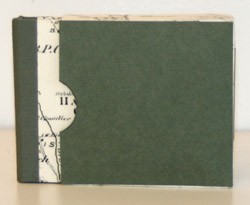 I liked the
I liked the 